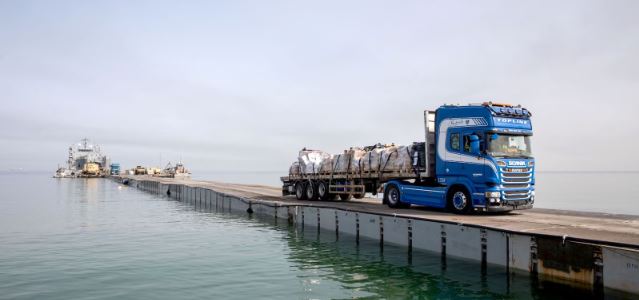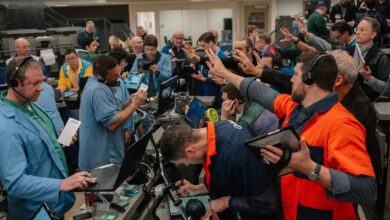US Humanitarian Aid Pier off Gaza Becomes Inoperable for the Third Time This Month

The United States humanitarian aid pier off the coast of Gaza has become inoperable once again, marking the third time in a month that adverse weather conditions have disrupted its operations. The pier, part of a $320 million project aimed at facilitating aid deliveries to the besieged region, has faced significant challenges due to severe weather and rough seas.
Recent Incidents
- Weather Damage: Heavy seas and a North African weather system have caused parts of the temporary pier to break apart. The damage has necessitated multiple repairs and has significantly delayed aid deliveries. The most recent damage occurred just days after repairs were completed from the previous incident.
- Beached Vessels: High seas have also caused four US Army watercraft involved in the pier operations to become beached. These vessels were recovered with assistance from the Israeli Navy, but the process further disrupted aid operations.
Impact on Aid Deliveries
The temporary pier, known as the Joint Logistics Over the Shore (JLOTS), has been crucial in delivering over 1,000 metric tons of humanitarian aid to Gaza since it began operations in mid-May. Despite the frequent interruptions, the pier has played a vital role in getting much-needed supplies to the region【94†source】.
Future Prospects
Efforts are underway to repair the pier, but the recurring damage raises concerns about the sustainability of this method for aid delivery. US Central Command is working to stabilize the pier, but officials acknowledge that weather conditions will continue to pose challenges. They emphasize that alternative routes and methods are also being considered to ensure the continuous flow of humanitarian aid to Gaza.
The repeated disruptions to the US-built humanitarian aid pier highlight the difficulties of operating in such a volatile environment. While the pier has been instrumental in delivering aid, its frequent inoperability underscores the need for more resilient infrastructure and alternative delivery methods to support the humanitarian needs of Gaza’s population.





